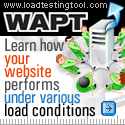HTML <link> media attribute
 HTML <link> tag HTML <link> tag
Example
Two different style sheets for two different media types (computer screen and
print):
<head>
<link rel="stylesheet" type="text/css" href="theme.css"
/>
<link rel="stylesheet" type="text/css" href="print.css"
media="print"/>
</head> |
Try it yourself!
|
Definition and Usage
The media attribute is used to specify different styles for different media
types.
Browser Support





The media attribute with the value of "screen", "print", and "all" is supported in all major browsers.
Tip: Opera also supports "projection" in full screen mode.
Syntax
Attribute Values
| Value |
Description |
| screen |
Computer screens (this is default) |
| tty |
Teletypes and similar media using a fixed-pitch character
grid |
| tv |
Television type devices (low resolution, limited scroll
ability) |
| projection |
Projectors |
| handheld |
Handheld devices (small screen, limited bandwidth) |
| print |
Print preview mode/printed pages |
| braille |
Braille feedback devices |
| aural |
Speech synthesizers |
| all |
Suitable for all devices |
 HTML <link> tag HTML <link> tag
Learn how your website performs under various load conditions
 |
|
WAPT
is a load, stress and performance testing tool for websites and web-based applications.
In contrast to "800-pound gorilla" load testing tools, it is designed to minimize the learning
curve and give you an ability to create a heavy load from a regular workstation.
WAPT is able to generate up to 3000 simultaneously acting virtual users using standard hardware configuration.
Virtual users in each profile are fully customizable. Basic and NTLM authentication methods are supported.
Graphs and reports are shown in real-time at different levels of detail, thus helping to manage the testing process.
Download the free 30-day trial!
|
|